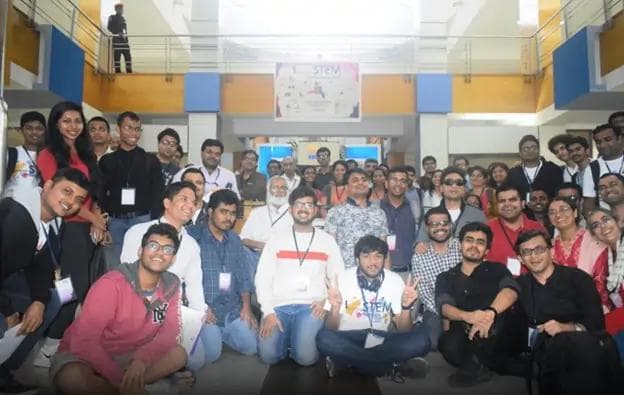How data lakehouses are vital to fuelling AI and the future of medicine
How data lakehouses are vital to fuelling AI and the future of medicine
Published by Jessica Weisman-Pitts
Posted on December 16, 2021

Published by Jessica Weisman-Pitts
Posted on December 16, 2021

By Michael Sanky, Global Industry Leader, Healthcare and Life Sciences, Databricks
The pandemic has not only highlighted the importance of speed for medical discoveries, but also how data science and artificial intelligence (AI) can aid this acceleration. For example, machine learning in medicine has taken significant strides in recent years, with drug molecules discovered through AI used in human trials. Despite this, a recent report from the Alan Turing Institute revealed that difficulties with data collection, use, storage, processing and integration with different systems, namely the lack of a robust data architecture, hindered efforts to build helpful AI tools in response to the pandemic.
To tap into the full potential of AI, organisations, especially in healthcare and pharmaceuticals, need to get their data in order. The question is, how?
The growing importance of data
While great efforts have been placed into the likes of drug and medical discovery, particularly in light of recent events, it can be a lengthy, complex and costly process. Not to mention, its low success rates – only a couple of years ago, the overall failure rate of drug development was reported to sit at 96%. This is where data has stepped in and is beginning to update methods and transform the potential of drug development to bring down that percentage.
Without human data, particularly genomic data, we cannot comprehensively capture all elements of a disorder or disease to gain a wider and deeper picture. This calls for sequencing on a very large scale to be able to discover and validate key genetic variants. More information and insights gathered means organisations can take better-informed steps and counteract a major cause of drug development failure – a lack of efficacy. Creating and establishing machine learning (ML) algorithms with this data is also enabling drug development pipelines to be automated – not only offering greater understanding but also accelerating drug discovery.
As another example, QSAR (Quantitative Structure-Activity Relationships) models are able to improve predictive accuracy on novel chemical structures as well as lower costs and time by reducing the number of compounds synthesised. Predictive analytics can also be used in drug development and manufacturing by transferring knowledge and incorporating learnings from rich historical data. This data can then be used to predict new compounds and accelerate the experiment lifecycle.
AI will and already is playing a big role in drug development, discovery and the clinical trials process. There are opportunities to accelerate clinical research with a modern approach to data and analytics.
The data challenge
Despite these steps forward, all this great data brings its own challenges. With so much biological and medical data now available, pulling out the necessary insights needed – and quickly – is harder than ever. There is no point having all this data if it cannot be properly utilised. Moreover, genomic data in particular requires a huge amount of storage, specialised software to analyse it and raises many data management, data sharing and also privacy and security issues – it is important to remember that this is highly sensitive and private information.
The problem for many organisations is that all this data is often highly decentralised and while they are dealing with new, fresh data, they are working with legacy architecture, which is difficult to scale to support analytics for so many different data points and large volumes of diverse data. Simply trying to find the right data needed to be used for analytics can take weeks.
Biotech company, Regeneron, was facing precisely these problems, grappling with poor processing performance and scalability issues. As a result, the data teams didn’t have what they needed to analyse the petabytes of genomic and clinical data available; failing to make the best use of what was at their fingertips. While organisations are now able to collect in more data than ever before, they are struggling to process these massive data sets.
The role of data architecture
This is where data lakehouses have a huge part to play. It is vital that health organisations simplify their infrastructure and operations to increase productivity and the probability of success. Data can only be used to its full potential if it is all centralised in one unified and easy-to access data analytics platform, such as a lakehouse. The simplified lakehouse infrastructure allows for greater scalability, automation and for machine learning to be done at scale to accelerate drug cycle pipelines. A unified platform also enables the creation of interactive workspaces for greater transparency and collaboration through all stages of the drug lifecycle. Data and insights can be easily shared between teams, whilst ensuring reliability and upholding security to protect sensitive data. As a result, overall drug target identification is sped up for faster discovery of drugs and therapies and teams can work in more disease areas simultaneously.
Having to deal with legacy architecture and complicated infrastructures, on the other hand, is a time suck, particularly setting up the right infrastructure and maintaining it to support the necessary analytics. This draws teams away from carrying out the vital analysis itself. Through increased automation, such as automating the likes of cluster management to automatically switch over operations in case of any system failures, teams can spend less time on DevOps and instead concentrate on higher value tasks, namely drug development and discovering new treatments, still safe in the knowledge that there will be no disruptions. When Regeneron turned to using a new platform offering a more robust data architecture, finding the right data to use for analytics went from taking three weeks to two days, helping support a much broader range of studies. It is data architecture that is the key to making data usable and to be able to answer questions for improved drug discovery.
In addition to enabling clinical predictability and access to data lineage, the lakehouse platform allows researchers to take advantage of reproducible, ML-based systems for generating and validating hypotheses, which then allows them to make more targeted decisions about their time and research.
Truly harnessing the potential of data
The vital role of data in healthcare, particularly for drug and medical discovery, may be highly recognised but now organisations must move this further forward to be harnessing the full potential of that data. Without a robust data architecture, those high failure percentage rates for the likes of drug discovery will not be lowering anytime soon, but with a centralised, scalable platform to simplify operations, organisations can gain the insights they need and accelerate drug discovery. Data is only the first step, having the necessary data architecture in place is the next.
By Michael Sanky, Global Industry Leader, Healthcare and Life Sciences, Databricks
The pandemic has not only highlighted the importance of speed for medical discoveries, but also how data science and artificial intelligence (AI) can aid this acceleration. For example, machine learning in medicine has taken significant strides in recent years, with drug molecules discovered through AI used in human trials. Despite this, a recent report from the Alan Turing Institute revealed that difficulties with data collection, use, storage, processing and integration with different systems, namely the lack of a robust data architecture, hindered efforts to build helpful AI tools in response to the pandemic.
To tap into the full potential of AI, organisations, especially in healthcare and pharmaceuticals, need to get their data in order. The question is, how?
The growing importance of data
While great efforts have been placed into the likes of drug and medical discovery, particularly in light of recent events, it can be a lengthy, complex and costly process. Not to mention, its low success rates – only a couple of years ago, the overall failure rate of drug development was reported to sit at 96%. This is where data has stepped in and is beginning to update methods and transform the potential of drug development to bring down that percentage.
Without human data, particularly genomic data, we cannot comprehensively capture all elements of a disorder or disease to gain a wider and deeper picture. This calls for sequencing on a very large scale to be able to discover and validate key genetic variants. More information and insights gathered means organisations can take better-informed steps and counteract a major cause of drug development failure – a lack of efficacy. Creating and establishing machine learning (ML) algorithms with this data is also enabling drug development pipelines to be automated – not only offering greater understanding but also accelerating drug discovery.
As another example, QSAR (Quantitative Structure-Activity Relationships) models are able to improve predictive accuracy on novel chemical structures as well as lower costs and time by reducing the number of compounds synthesised. Predictive analytics can also be used in drug development and manufacturing by transferring knowledge and incorporating learnings from rich historical data. This data can then be used to predict new compounds and accelerate the experiment lifecycle.
AI will and already is playing a big role in drug development, discovery and the clinical trials process. There are opportunities to accelerate clinical research with a modern approach to data and analytics.
The data challenge
Despite these steps forward, all this great data brings its own challenges. With so much biological and medical data now available, pulling out the necessary insights needed – and quickly – is harder than ever. There is no point having all this data if it cannot be properly utilised. Moreover, genomic data in particular requires a huge amount of storage, specialised software to analyse it and raises many data management, data sharing and also privacy and security issues – it is important to remember that this is highly sensitive and private information.
The problem for many organisations is that all this data is often highly decentralised and while they are dealing with new, fresh data, they are working with legacy architecture, which is difficult to scale to support analytics for so many different data points and large volumes of diverse data. Simply trying to find the right data needed to be used for analytics can take weeks.
Biotech company, Regeneron, was facing precisely these problems, grappling with poor processing performance and scalability issues. As a result, the data teams didn’t have what they needed to analyse the petabytes of genomic and clinical data available; failing to make the best use of what was at their fingertips. While organisations are now able to collect in more data than ever before, they are struggling to process these massive data sets.
The role of data architecture
This is where data lakehouses have a huge part to play. It is vital that health organisations simplify their infrastructure and operations to increase productivity and the probability of success. Data can only be used to its full potential if it is all centralised in one unified and easy-to access data analytics platform, such as a lakehouse. The simplified lakehouse infrastructure allows for greater scalability, automation and for machine learning to be done at scale to accelerate drug cycle pipelines. A unified platform also enables the creation of interactive workspaces for greater transparency and collaboration through all stages of the drug lifecycle. Data and insights can be easily shared between teams, whilst ensuring reliability and upholding security to protect sensitive data. As a result, overall drug target identification is sped up for faster discovery of drugs and therapies and teams can work in more disease areas simultaneously.
Having to deal with legacy architecture and complicated infrastructures, on the other hand, is a time suck, particularly setting up the right infrastructure and maintaining it to support the necessary analytics. This draws teams away from carrying out the vital analysis itself. Through increased automation, such as automating the likes of cluster management to automatically switch over operations in case of any system failures, teams can spend less time on DevOps and instead concentrate on higher value tasks, namely drug development and discovering new treatments, still safe in the knowledge that there will be no disruptions. When Regeneron turned to using a new platform offering a more robust data architecture, finding the right data to use for analytics went from taking three weeks to two days, helping support a much broader range of studies. It is data architecture that is the key to making data usable and to be able to answer questions for improved drug discovery.
In addition to enabling clinical predictability and access to data lineage, the lakehouse platform allows researchers to take advantage of reproducible, ML-based systems for generating and validating hypotheses, which then allows them to make more targeted decisions about their time and research.
Truly harnessing the potential of data
The vital role of data in healthcare, particularly for drug and medical discovery, may be highly recognised but now organisations must move this further forward to be harnessing the full potential of that data. Without a robust data architecture, those high failure percentage rates for the likes of drug discovery will not be lowering anytime soon, but with a centralised, scalable platform to simplify operations, organisations can gain the insights they need and accelerate drug discovery. Data is only the first step, having the necessary data architecture in place is the next.
Explore more articles in the Technology category











